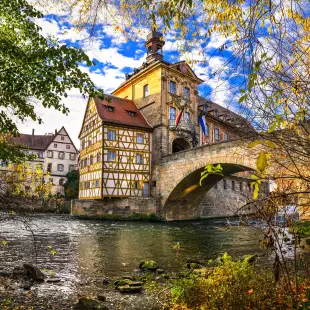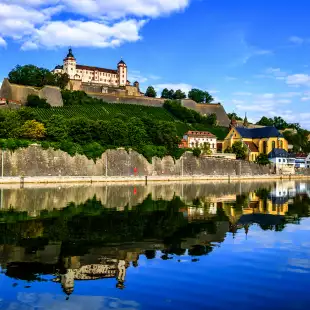The History of Half-Timbered Houses: Our Medieval Germany Cruise

Synonymous with ancient European towns and villages, it’s hard to miss the charming half-timbered houses so prevalent in German architecture.
Known as fachwerk in German and maison à colombages in French, these timber-framed buildings with their sloping roofs and dark wooden beams, so typical of the building style of the late medieval period, may also date back as far the 12th century.
The characterful exposed beams, cut ends, braces and studs, with spaces between often filled with plaster or brick give these buildings their instantly recognisable appeal. The phrase ‘half-timbered’ literally refers to the logs being halved, before being constructed in a simple, box-like frame. Hard and durable, the solid oak beams are the very reason that many of these buildings are still standing strong today. Through the Renaissance and Gothic periods, the base of these reliable buildings stayed much the same, with fashionable additions of each era making their way into the designs. Depending on the supply of wood in the era, as well as the architectural trends, some of the beams would be added for decoration or symbolism, rather than for structural purposes.
Around the same time in England, an abundance of oak meant that many Tudor structures were built in the same way, though more often with a black and white finish. The blackened wood is actually a product of natural ageing, though the effect is sometimes recreated on younger buildings with a lick of black paint. In Germany and France they tend to be painted in contrasting shades of bright ochre, mint green and vibrant paprika – some more faded and muted than others.
There’s Bamberg City Hall, with its mix of half-timbered house forming the base of its majestic tower, red roof and adjoining bridges. Or charming Miltenberg, where, beyond the grand gatehouse, it’s said the locals were allowed to use free wood from the local area to construct rows of buildings in this iconic style. Not forgetting Ochsenfurt, just south of Würzburg, where its main street, fringed with timber-lined houses, simply bursts with Bavarian character. On a German tour or river cruise, be sure to keep a look out for these delightful, higgledy-piggledy half-timbered structures, dotted around the picturesque streets some grand and imposing, some quaint and diminutive, often in the shadow of an impressive medieval castle, just like a scene from a fairy tale.











